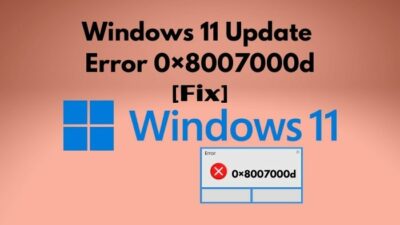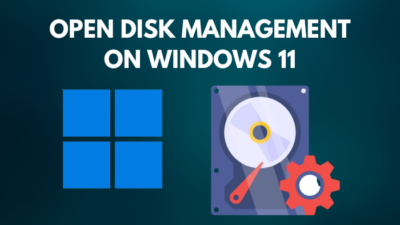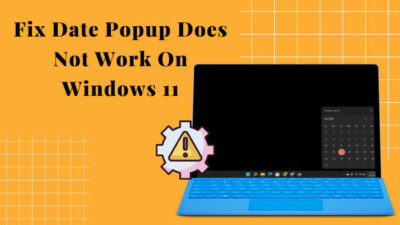When Windows corrupts, and your PC fails to start, installing a new Windows setup with a bootable USB is the best way.
As soon as you insert the bootable device, it should detect and install Windows normally. But when it doesn’t, you may panic and start sweating.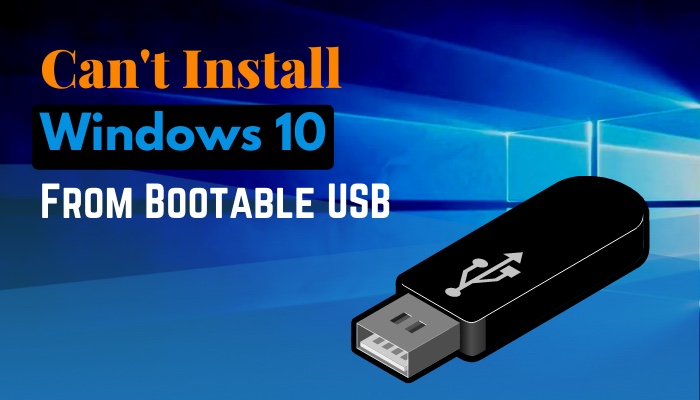
Well, don’t worry. It’s effortless to fix, and I’ll show you the right way to do it. So, let’s start.
How to fix Windows 10 Not Installing from a Bootable USB
Using the bootable USB device to install a new Windows is better to avoid duplication, bugs, and errors. But, users can face problems during the installation and fix the issue by using the right bootable drive, changing the device format, and altering the BIOS settings.
In addition, there are more solutions to the problem, and I’ve stated them below. Consider reading the following methods to fix the inability to install Windows 10 from a bootable USB.
Here are the ways to fix Windows 10 not installing from a bootable USB device:
1. Use Different Bootable USB
Windows won’t install properly, or your PC won’t recognize the USB drive if it’s faulty. When having an issue during the installation, change your bootable USB device and use a new one.
2. Use Different Installation Methods
Using the bootable USB device is the best way to install a new Windows. But, if you have a faulty USB and don’t have a spare, you need to use other options to install Windows.
You can directly download the Windows or use a CD to install or upgrade your Windows.
3. Free Up Storage Space
Windows needs at least 16 GB of free space in the storage drive for 32-bit OS and 20 GB for 64-bit OS.
If the drive has less available space, clear up the drive and make space for your Windows.
4. Format USB Drive as FAT32
All modern computers are equipped with UEFI by default. You must require a FAT32 formatted USB drive to install the Windows for the UEFI-enabled PC.
If your USB drive is formatted as NTFS, follow the procedures below to convert it to FAT32.
Here is the way to format the USB drive as FAT32:
- Go to your File Explorer.
- Right-click on your USB drive.
- Press on Format.
- Click the drop-down menu from File System.
- Select FAT32 (Default).
- Press on Start.
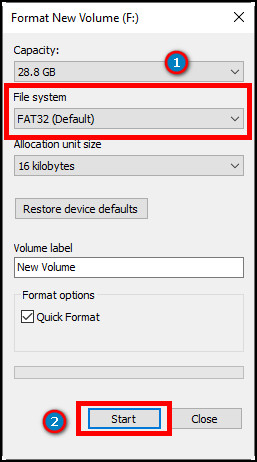
The USB drive is formatted as FAT32 and ready to use as a bootable USB storage to install Windows on your UEFI mode computer.
5. Setup First Boot Option
When installing Windows using a bootable device, you must set the boot priority to a USB drive from the BIOS. Follow the instructions below to configure the first boot in BIOS.
Here are the steps to set up the first boot option on your PC:
- Restart your PC.
- Press ESC/ F1/ F2/ F8/ F10 to enter BIOS.
- Navigate to the Boot tab.
- Configure your boot priority.
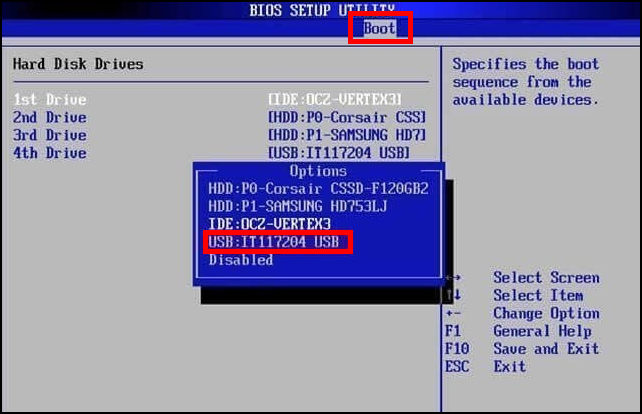
It will change your boot priority and set the USB drive as your priority. But, if you are unable to enter into BIOS, fix the inability to boot into BIOS before changing the settings.
6. Enable CSM/Legacy Boot Mode & Disable Secure Boot
CSM offers backward compatibility and helps when installing Windows. It allows the user to install Windows that doesn’t support UEFI mode.
Depending on the manufacturer, the settings may vary. Read the process below to enable CSM/Legacy boot from your BIOS settings.
Here is the method to enable CSM/ Legacy boot mode:
- Restart your computer.
- Open the BIOS settings.
- Go to the Boot tab.
- Press on Launch CSM.
- Choose Enable.
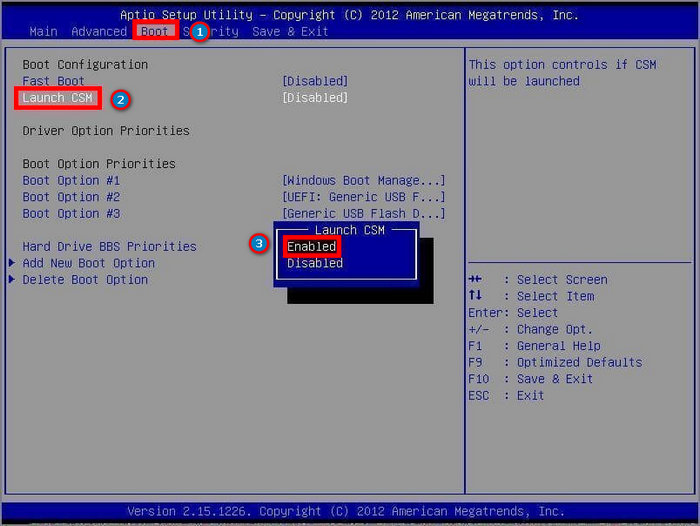
After enabling the CSM/Legacy boot mode, you need to disable the Secure Boot from BIOS.
Here is the procedure to disable Secure Boot from BIOS:
- Navigate to the BIOS settings.
- Go to the Security/ Boot tab.
- Find and click on Secure Boot.
- Choose Disable.

It will disable the secure boot option from your computer and allow you to install Windows using the bootable device.
However, if you are unable to navigate, fix the keyboard not working issue in BIOS.
7. Change UEFI or Legacy BIOS Boot Mode
Depending on your bootable drive format, you need to enable UEFI or Legacy mode. When using the FAT32 format, you’ve to choose the UEFI mode, and for the NTFS, you need to enable the Legacy mode.
If you’re new to the BIOS settings, read the article to enter BIOS or UEFI mode in Windows and change the boot mode.
Here are the steps to change UEFI or Legacy BIOS boot mode:
- Navigate to the BIOS settings.
- Go to the Boot tab.
- Press on UEFI/BIOS Boot Mode.
- Select UEFI or Legacy from the option.
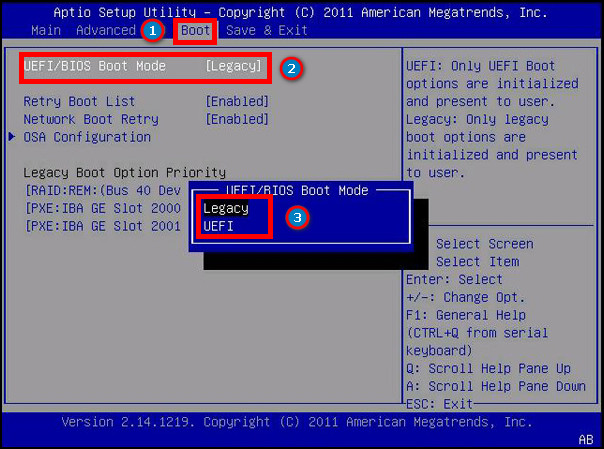
After selecting the BIOS mode, your PC is ready to install a new Windows.
8. Copy the Windows File Correctly
Once you’ve set up your BIOS, you can start installing the Windows using the bootable USB drive.
But before that, ensure you’ve properly booted and copied the Windows to the USB drive. You can use the Windows media creation tool to download and flash Windows installation to USB.
Now, reboot your PC and start the Windows installation process using the bootable USB drive.
If you’re curious about the reasons behind the issue, read the passage below to get a clear idea about the causes.
Why Can’t I Install Windows 10 from Bootable USB
You are unable to install Windows 10 because of an error in the bootable device, insufficient computer specifications, incorrect BIOS settings, insufficient disk space, corrupted Windows files, faulty computer parts, and incompatible hardware.
Also, there are additional causes behind the issue. Consider reading the following reasons to understand the complication better.
Here are the reasons behind unable to uninstall Windows 10 from a bootable USB:
Error in Bootable USB Drive
During installation from the BIOS, your PC should detect the bootable device. But, if it fails to detect the bootable device, it can be corrupted or have an issue.
Also, the USB drive may be incompatible with your PC and Won’t install Windows 10 from a bootable USB.
PC Doesn’t Support Bootable USB
Some computers, especially the old models, don’t have the option to install Windows from a bootable device.
If you’re using an old PC, it may not support a bootable drive. In that case, you must follow other options.
USB Format Not Supported
Incorrect USB format is a common reason behind the Windows installation issue with a bootable USB drive.
You must need a FAT32 USB format to install Windows in the UEFI mode computer. If it’s in NTFS format, you won’t be able to boot and install Windows in a UEFI mode PC.
Unconfigured EFI/UEFI Settings
UEFI/EFI settings in the BIOS are vital for successfully installing Windows. The Windows won’t install from a bootable USB drive if unconfigured.
Insufficient Disk Space
To install Windows in a drive, you need sufficient space in the drive. Windows won’t install via a bootable USB drive if the drive is full or lacks space.
Windows File Issue
If the Windows file or image gets corrupted during the media creation, it won’t install properly with the bootable device.
Additionally, the file may corrupt when copied to a bootable USB drive and fail to boot.
Incompatible Hardware
Windows 10 has a minimum hardware requirement for installation. You at least need a 1 GHz processor and 1 GB of RAM.
If your PC doesn’t meet the condition, it won’t install Windows from a bootable USB device.
Problems with USB Port
When the BIOS settings are correct, Windows files are in perfect condition, and your PC has met the minimum requirements, you should be able to install Windows normally.
However, if the PC fails to recognize the bootable device, your USB port is faulty or has an issue.
Frequently Asked Questions
Why is Windows not booting from USB?
The Windows isn’t booting from USB because of a faulty stick, incorrect BIOS settings, and enabled secure boot.
Can I use an NTFS USB drive to boot Windows on a UEFI PC?
No, a UEFI system can’t boot from NTFS. You need to format the USB device as FAT32 to boot the Windows in UEFI.
Are there ways to install Windows on a PC?
You can install Windows 10 using a CD or bootable USB drive or directly download it from the Windows Advanced Options.
Conclusion
A bootable USB drive is a life-saver when the PC doesn’t start or needs to install a new Windows. But it’s unfortunate when the bootable device doesn’t work correctly.
In this article, I’ve explained the reasons behind the problem and described how to fix it.
Share your thoughts in the comment box below, and I’ll see you at the next one. Goodbye.

